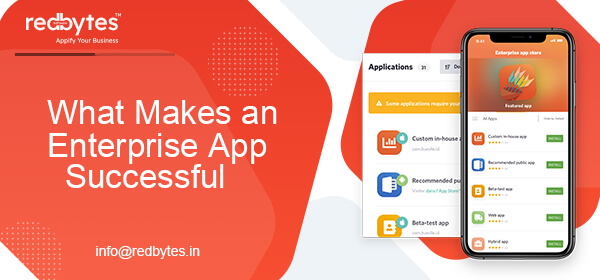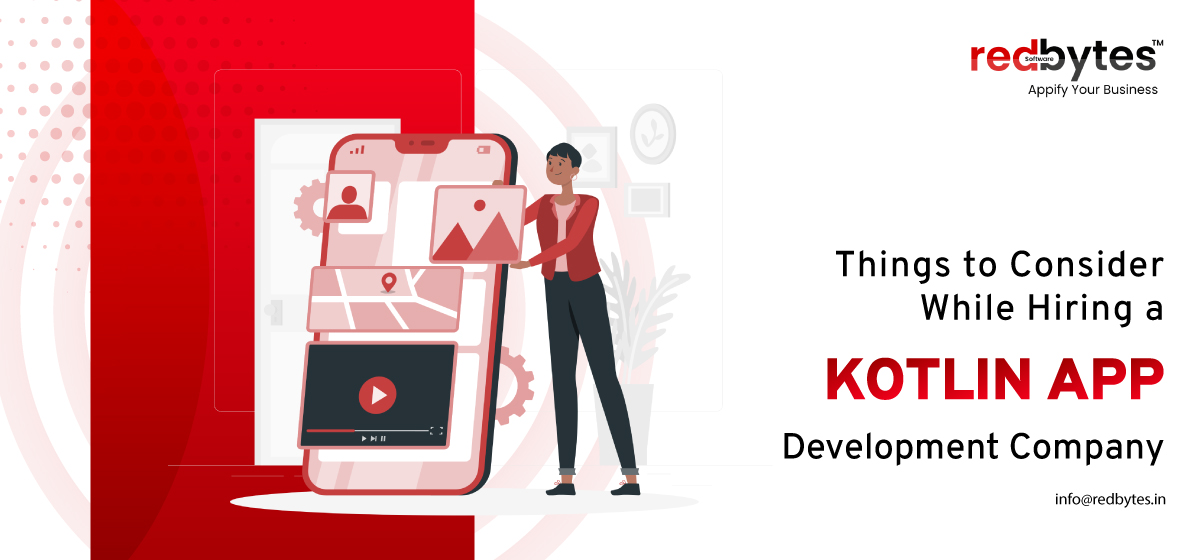Mobile applications that are generally used in business to solve any kind of enterprise issues is known as an enterprise mobile application. It is important for enterprises to follow the trend of using apps for internal and external services if they wish to succeed in the current app dominated world.
Different types of Enterprise mobile applications include
• Content management
• Customer support
• Payment processing
• Email marketing systems
• Automated billing system
• Collaboration, messaging and business intelligence
• Customer relationship management(CRM)
• Enterprise application integration (EAI)
Factors that make an Enterprise App Successful
For any Enterprise to develop, the first step to take forward is to have a well-planned strategy. After you have the perfect strategy, you can plan the business and go for a suitable enterprise mobile application. Following are some key factors that an enterprise should consider to build a highly buoyant mobile enterprise application to ensure their enterprise-wide acceptance:
• Clarity of business goals and objectives
Having a clear vision about the goal you need to achieve is very important. Once you have a strong objective, start thinking about the platform on which you want your app to be done. Keep your idea concrete to justify your investment in the mobile app development. The goals you need to consider are to:
1) Increase the customer’s perception of brand experience
2) Project the growth of your organisation
3) Increase the business force of your partners and employees
4) Attract new customers
5) Enhance the revenue opportunities
• Build apps keeping the target audience in mind
Another factor to consider before you develop an enterprise mobile app is to understand the behaviour of the mobile users and the way they use the device. How to optimise the user experience?
This might be the main question in your mind and if you have the answer to this question, you have solutions for rest all. This can help enterprises steer the app development efforts to fulfil user expectations, and result in an enchanting user experience for the app users.
• Selecting the apt platform for your Enterprise mobile application
The process of creating a mobile enterprise app is challenging as well as rewarding at the same time. Whether it’s iOS, Android, BlackBerry or Windows Phone, no platform has a clear dominance over the other. So, it’s unavoidable to develop apps for all these platforms on both tablets and smart phones. But. It’s highly critical to choose a development methodology that meets all your cross-platform goals for the enterprise.
1) Native apps: These are built for a specific platform using the SDK platform, tools, languages and operating system (iOS, Android) that are typically provided by the platform vendor. Features of native apps:
• Most reliable and fastest, conventional
• Can get into the wider functionality of the device like: microphone, camera, accelerometer, compass, swipe gestures etc.
• Make use of push-notifications
• Provide access to important device attributes such as geo-location API etc.
2) HTML5-based apps: This is the latest approach used by most of the organizations with HTML5-based development. This helps them to reduce custom development costs for all the platforms. Even though HTML-5 based apps are a cost-saver, it does not provide the advantage of leveraging the native APIs and device capabilities.
3) Hybrid apps (Native + HTML5): Another approach is to include both HTML5 and native development, and adapt the core functionality of all platforms. Depending on the business requirements, you can choose the right platform.
The key method to have the best enterprise is to choose the right framework which is capable enough to meet the changing technology and user requirements.
• Maintain a policy to manage the app within the enterprise
As mobile applications are becoming widespread, enterprises need to ensure that their IT departments control what employees can install and remove from their mobile devices. Also, ensure standard applications and configurations to help the employees derive maximum benefit from their mobile devices.
The system of MAM, i.e., mobile application management is all about managing the apps installed on a user’s device. This has already been used by the organisations through desktops. Now they have to follow the same in mobile devices. MAM provides a higher level of control over the applications.
You May Also Like:
Are Mobile Apps a Necessity Rather than a Luxury for SMEs?
Capabilities required for Mobile App Management
1) Authorization
2) OTA application provisioning
3) Regular monitoring of app performance and delivery
4) User and group access control
5) Update the app versions
6) Analyse the usage
7) Event management, reporting and tracking
• Security check for the application
This is the most challenging part of creating an application. With the rapid growth of mobile devices, applications, information protection is critical than before. Particularly when you develop mobile applications for highly regulated industries such as finance and healthcare. Right from password enforcement, data encryption, virus protection etc. organizations need to use robust application security measures to prevent data theft and loss.
Main Security policies that should be followed:
1) Models of devices to be used
2) Minimum requirements needed within the device
3) Networks, data, application etc. permitted to access
4) SSL certificates (data files that digitally bind a cryptographic key to the data of the enterprise)
• Ownership
App management requires a central figure to ensure that they don’t go wrong and loose direction. These project leaders will have to analyse the app from the start to the finish.
• Take regular data analytics
It’s important to get to know who all are using your app and how they’re being used. The continuous analysis of these things will help you improve your organisation’s app environment. The things you should keep an eye out are the number of active users, the number of versions and the number of downloads.
• Keep the user expectations in mind
Since enterprise apps are used on a regular basis, the expectation of the user also increases on the side of design menu, loading time, appearance etc. Human resource is the most valuable thing for any company. Each employee has a different set of experiences and this can be effectively utilized while making the app.
• Estimating the Costs
Making and testing of an app is an expensive act and requires up-to-date cost calculations and implementation. Enterprise Apps actually optimize the processing of the company and results in increasing efficiency which can lead to cost reductions. Thus, before going in for making an enterprise app, the purpose and effectiveness of the app should be well studied and calculated.
• Accessing app functionality
While testing the finally developed app, the loading time and functionality are the main things to be checked. Checking for the bugs and other issues is also important. Slow and dysfunctional apps become reasons for user irritation and can harm the company’s reputation.
• Compatibility with all devices
Each device has its own variations and it should be well tested that the app works within all devices. This also ensures that the maximum number of devices including Android, iOS and Windows are used in order to confirm the smooth usage of the app over all platforms.
Whether it is a large/small enterprise, the strategy to have an enterprise mobile application is a key to stay ahead in the current business environment. No one can escape enterprise mobility for sure because technology has been pushing forward so much. Therefore, the question is how soon and how effectively you can make this transformation in your business.















